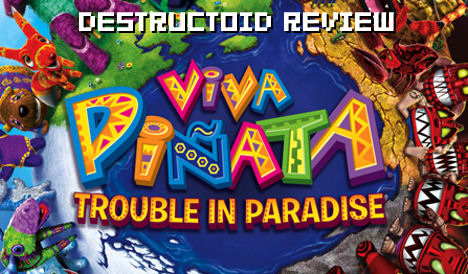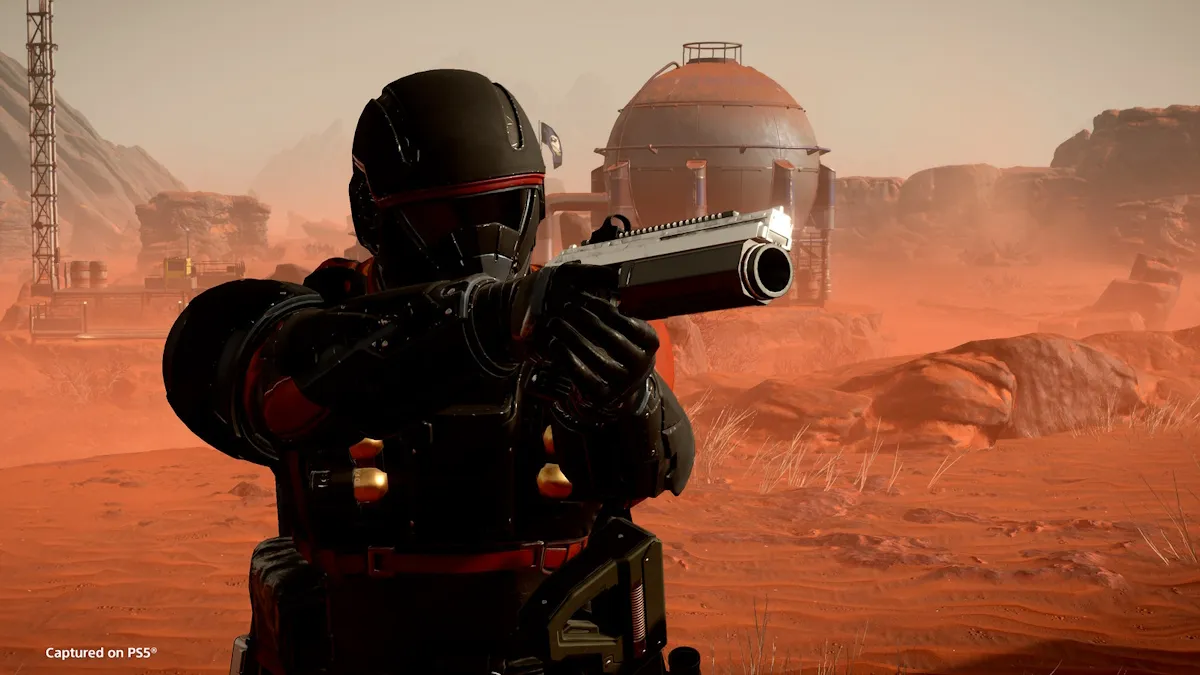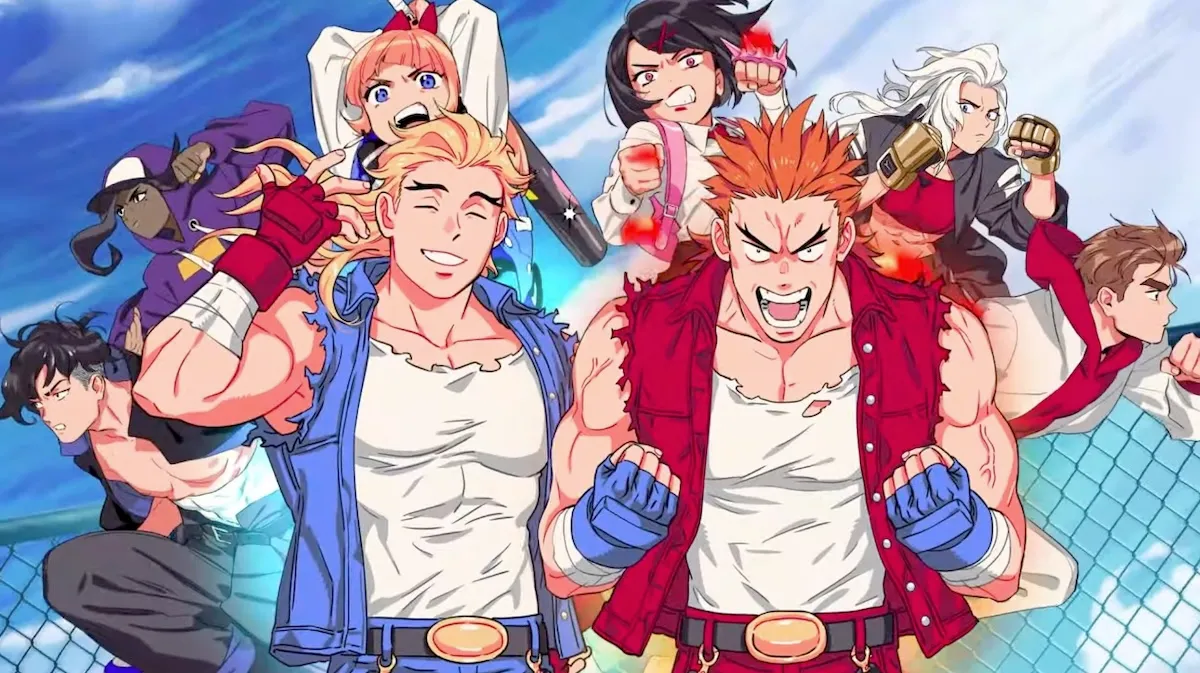When a console has Viva Piñata as part of its library, you can’t accuse a system of not at leasty trying to provide something unique and diverse. Amidst the drab and “gritty” shooters that have free reign over all things Xbox, the original Viva Piñata stood out like a brightly colored … well, Pinata. It was something different, and it was critically rewarded for being so.
Sadly, as diverse as the library gets, the console’s user base remains the same. While VP eventually had respectable sales, a slow start and general ignorance from the gamer crowd meant it was never a hard hitter on the 360. Undeterred, however, Rare has returned with a bigger and brighter sequel — Viva Piñata: Trouble in Paradise.
Conrad Zimmerman and myself have spent extensive time getting to grips with the title, learning how to turn a Tartridge blue and what you need to do in order to make a Taffly poop purple fertlizer. Step into our garden as we review Viva Piñata: Trouble in Paradise.

Viva Piñata: Trouble in Paradise (Xbox 360)
Developed by Rare
Published by Microsoft
Released September 2, 2008
![]() Jim Sterling:
Jim Sterling:
If you’ve played the first Viva Piñata then you’ll know what to expect from Trouble in Paradise. The game’s MO seems to be to provide the same experience as last time, but a lot more of it. Once again, you’re in charge of a small garden armed with a shovel, a watering can and a desire to make candy-filled animals want to live in your sugar kingdom. Just like last time, you’ll be spending hours watering plants, picking fruit, digging ponds and shaping your garden to meet the needs of the creatures who might wish to call it home.
There are a few performance tweaks this time around — hotkeys make selecting your garden tools much faster, and you can also scroll through your Piñata or various items with the shoulder buttons. There are, of course, brand new Piñatas to collect as well, including the adorable Custacean and burly Limeoceros.
One significant overhaul lies in how you send your Piñatas to parties. In the last game, you would be assaulted with various random requests for certain Piñatas by Piñata Central. You’d then place a box in your garden and find the requested Piñata within a set time limit before sending it off to a party for a reward.

This time around, you can send any Piñata you wish to a party in exchange for money. However, in order to do this you must first fill the Piñata’s “Candiosity” meter. Candiosity can be gained by feeding your chosen animal its favorite types of food, dressing it up, renaming it or building it a home. Once its meter is full, you highlight the Piñata before selecting a special crate outside of the garden. Then you just sit back and wait for payment. If you wish to do a little extra work, similar challenges to the first game also present themselves and can be found via the game’s menu.
Another addition to the game is the ability to travel to two new areas in order to get more specialist Piñatas. The Dessert Desert and the Piñarctic are home to a whole range of new creatures that are based on sand-dwelling or snowbound animals. For instance, you can find Geckis and Camellos in the desert, while Pengums and Robeans can only be caught in the arctic area. In order to capture these creatures, you must purchase traps and place bait inside them. It’s a very simple process of finding the right traps and the correct bait in order to snag the animal you want. The captured Piñatas can then be released into your garden once they’ve been delivered to the post office, but you’ll still need to do things to your garden in order to make them stick around.

These new areas are interesting and can be a nice change of scenery now and then, but they are not especially deep and the waiting around for Piñata to show up can get a bit weary. It doesn’t feel fleshed out enough to be anything more than a novelty, although it has to be said that the Geckis are sickeningly cute.
Returning from the last game are Sour Piñatas and Ruffians. Sours are Piñatas that have gone wrong and will cause trouble in your garden unless you can find a way to win them over from the dark side. Ruffians are just cunts. Sorry, but there’s no way of saying it — they’re cunts. They ruin your garden by trashing stuff and won’t sod off unless you pay them money or employ Watchlings to frighten them. The biggest cunt of all, however, is Professor Pester, a brand new villain for the game. Once you’ve become an experienced enough gardener, this red-faced git will show up and cause trouble. Unless you catch him quickly enough and pay him a bribe, Pester will pick your most valuable Piñata and murder it there and then, while you’re powerless to do anything to stop him.
And that, right there, is Trouble in Paradise‘s biggest problem. If the original game was frustrating in places, there are moments in TiP where you feel absolutely assaulted. In between finding ways to attract and breed new creatures, you are constantly assailed by visits from Sours, Ruffians and the good Professor. As if that wasn’t bad enough, various residents will regularly pick fights with each other, visiting Piñatas will hunt other ones, and your animals can also get sick. Oh, and that’s not even mentioning the tedious process of making sure that weeds don’t infest your garden.

There is so much going on and so many potential disasters to keep a lid on that what starts out as a relaxing and fun little tinkering game can quickly escalate into a stressful damage control simulator. There is so much happening to fight your attempts at fun that sometimes you feel actively discouraged from playing. After your prize Newtgat falls foul of any number of ways to die, you quickly learn not to get too attached to any of your residents, and that’s pretty disheartening. There are of course ways to keep on top of this — Sours can be kept at bay by earning “Tower of Sour” pieces, Ruffians can be shooed off, fights broken up and sick animals healed — but there is so much to concentrate on at once that things will invariably go wrong at some point, and it threatens to be game breaking.
Another irritating problem with the game is in how restrictive it can be. Even when your garden has expanded to its maximum size, you are constantly having to remove plants, items and Piñatas because the game is telling you that there’s not enough space. The worst part of this is that there’s usually plenty of space! My garden for instance — called Sterlingrad — has huge empty spaces where new items could be placed, but every time I try and buy one from the store, the annoying clerk shouts “Woah there,” and cockblocks my attempts at decoration. It’s incredibly frustrating and leads to you randomly deleting all sorts of stuff in a vain attempt to do what it is you want.
Trouble in Paradise is also hurt by the fact that a much more user-friendly and streamlined version of the game was released as Pocket Paradise for the DS. The interface of Pocket Paradise is so well constructed that it was hard for me to adjust to the relatively archaic controls of TiP. While the game is a little more streamlined than the original 360 game, it still menu heavy, and it can take a while to find what you’re looking for. Maybe if the game didn’t regularly use two screens to convey information that could be displayed on one, it wouldn’t be an issue.

The game is frustrating, aggravating and sometimes a huge waste of time, yet … I really do like it. Somehow, Rare has found a way to make a game so incredibly infuriating, and yet so endearing that it actually manages to get away with pulling some pretty crummy moves on you. Growing new plants and attracting new Piñatas is just as rewarding a feeling as it was in the last game, while the deeper secrets such as finding out how to teach your Piñatas tricks, or how to create special “variant” creatures can get very addictive indeed.
There are two new minigames on offer, neither of them all that great. There’s a racing game which is just confusing and messy, and a beauty pageant which is more boring than anything else. However, the game shines in giving you the ability to send and receive Piñata via Xbox Live, plus it can be very interesting to get invited into someone else’s garden or show off your own handiwork. Up to four players can work together on a garden this way, and it’s a very good idea indeed.
This is where I’d talk about the Live Vision camera add-ons, but I don’t own one, so I can’t. Sorry. What I can do, however, is provide our very own Vision Card for you, courtesy of Conrad’s garden. Enjoy:

I’ve been pretty harsh on TiP, but it’s for the simple reason that I think it’s a good title. It’s a very good game that could be a great game if it would get its shit together. Half the time, Trouble in Paradise appears to have issues with deciding what it actually wants to be. Is it a fun family game for kids, or is it a deep and stress-inducing management game? It’s far too complex for children, but there is so much cutesy stuff and so many annoying characters that could potentially alienate adults. The DS version managed to rock a near perfect balance between depth and ease of use, but all that seems to have been forgotten for the Xbox 360.
If you are a tolerant person and want a gorgeous-looking game that has a huge amount of fun buried underneath all the cruelty, then Viva Piñata: Trouble in Paradise is definitely a game for you. There really is a lot to love, which is why the bad points are so glaring. I want to love this game, and in many ways I do, but there is far too much in it that represents the very antithesis of fun. My opinion on TiP is almost as schizophrenic as the title itself. One moment I am in love with it, the next moment I want to punch the developers in the balls.
When all is said and done, however, I can’t stay mad at Trouble in Paradise. Professor Pester killed my Doenut, but I just turned my Tartridge blue. My prize Custacean just fell ill, but hey, at least I’m one step closer to winning over a Sour Crowla. Damn this game, so punishing … and yet so rewarding.
Score: 7.0

![]() Conrad Zimmerman:
Conrad Zimmerman:
Since Jim has already established that the basic gameplay of Viva Piñata remains the same in this sequel, I’m not going to waste your time going over it again. I loved the first game and the basic rules that I enjoyed so much aren’t any different. Instead, let’s focus on what has changed.
A major effort seems to have been made in streamlining the process of playing the game and there are several new features that make everything run a little more smoothly. A big help comes in the form of a “ban list” for piñatas that you don’t want wandering into your garden. On the outer edge is a sign where you can designate which species aren’t allowed to visit you anymore. You can only ban piñatas that you’ve become a master romancer of, but it’s a big help in keeping the population manageable and avoiding unnecessary conflicts between some random piñata and one you’re actively trying to work with.
One of the most annoying parts of the original Viva Piñata was the menu system. Every time you needed to go to the shop to purchase an item, you would have to suffer through a loading screen. While it was never a lengthy wait, it wore on me after a while. Thankfully, Rare made things a little more convenient by allowing you to purchase seeds and fertilizer without ever leaving the garden. They function like your standard tools and can be selected by the D-pad and dropped wherever you require them.

Another mild frustration from the previous title resulted from random party requests. You would be given a limited amount of time to ship a specific piñata to a party to increase its value. Instead of these interruptions, there’s a crate always sitting on the outer edge of your garden and you can choose between three different parties to send a piñata to at your own leisure. I found it to be far more convenient and gave me another goal to work towards instead of feeling like it was being inflicted upon me.
The first bit of truly new content lies in the two alternate locations: The Dessert Desert and the Pinarctic. Instead of being complete garden areas on their own, they operate more like a hunting grounds. By placing traps and baiting them with fruits and vegetables, wandering piñatas can be captured and shipped to your garden. Many of the new piñatas can only be acquired by trapping and they will have resident requirements in order to make them stay when you’ve brought them back.
These areas aren’t really anything special. Trapping is a new mechanic, but it feels like adding an unnecessary step to the equation. The game doesn’t make any mystery about what baits to use to capture the piñata you’re after, so there isn’t even any puzzling out to do. I’d have preferred to just have these new piñatas arrive in my garden as normal instead of being forced to deal with a shallow gameplay element.

The Piñata Vision cards might be a gimmick, but they’re a fun gimmick. The Live Vision camera is always active when you’re in your garden and you can make use of it at any time. When it detects motion, a little window pops up on the right side of the screen so you can make sure the card you want read is within the frame. Once it’s read, whatever was on the card appears in your garden to be placed where you like. It works well when scanning both physical cards and images on a monitor.
This brings me to online integration, what I think is the most fascinating new feature of the game. Using your camera tool, you can take pictures of anything in your garden and upload the screenshot to the Viva Piñata website. By logging in with your Passport account, you can access all the photos you’ve taken in-game. You can even submit photos of your particularly cool piñatas to have code generated for them so other players can bring them to their own gardens via the Live Vision camera.

The game also features a few new ways to play it. First is a casual mode with none of the sour piñatas or Ruffians. This is ideal for young kids or those times when you just want to relax and have fun with the game instead of working so hard.
Then there’s the multiplayer modes. The game can be played over Live or via system link for up to four players. When playing in this way, all players work together in a single garden and all awards are given to every participant. I found it to be really helpful in cutting down the time required to complete all of the plant growing challenges. It can become pretty hectic and confusing when it comes to the piñatas if everybody isn’t communicating, however and the more I played with others, the more I felt as though it was just easier to get things done on my own.
A local co-op mode also exists. At any time, a friend can drop in to your garden by pressing start on a second controller. This brings up an additional cursor and the second player can help out using any of your tools. While they earn no awards or achievements, benefits of them accomplishing tasks come in the form of freebies from the tinkerer and doctor.
I initially expected this to be a great way for my fiance and I to play together as well as a means to introduce new people to the game. Sadly, this is not the case. With a second player, camera control becomes a serious problem and it’s often necessary to have both players at opposite ends of the garden just to survey what is where. It felt pretty clunky and it really isn’t at all the way this game was meant to be played. I commend Rare for trying, but they were better off leaving this out.

When I started playing Trouble in Paradise, I felt like I had done all of this stuff before. It didn’t seem as though there was enough content added to justify buying the same game a second time. That feeling remains, to an extent, but every change they’ve made really is for the better.
If you haven’t played a Viva Piñata game before, I would strongly urge you to pick this one up. For those of you who have, you won’t experience anything drastically different but it’s still a fantastic game and might just have enough new challenges to encourage you to pick that shovel up a second time.
Score: 7.5
Overall Score: 7.3 (7s are solid games that definitely have an audience. Might lack replay value, could be too short or there are some hard-to-ignore faults, but the experience is fun.)





